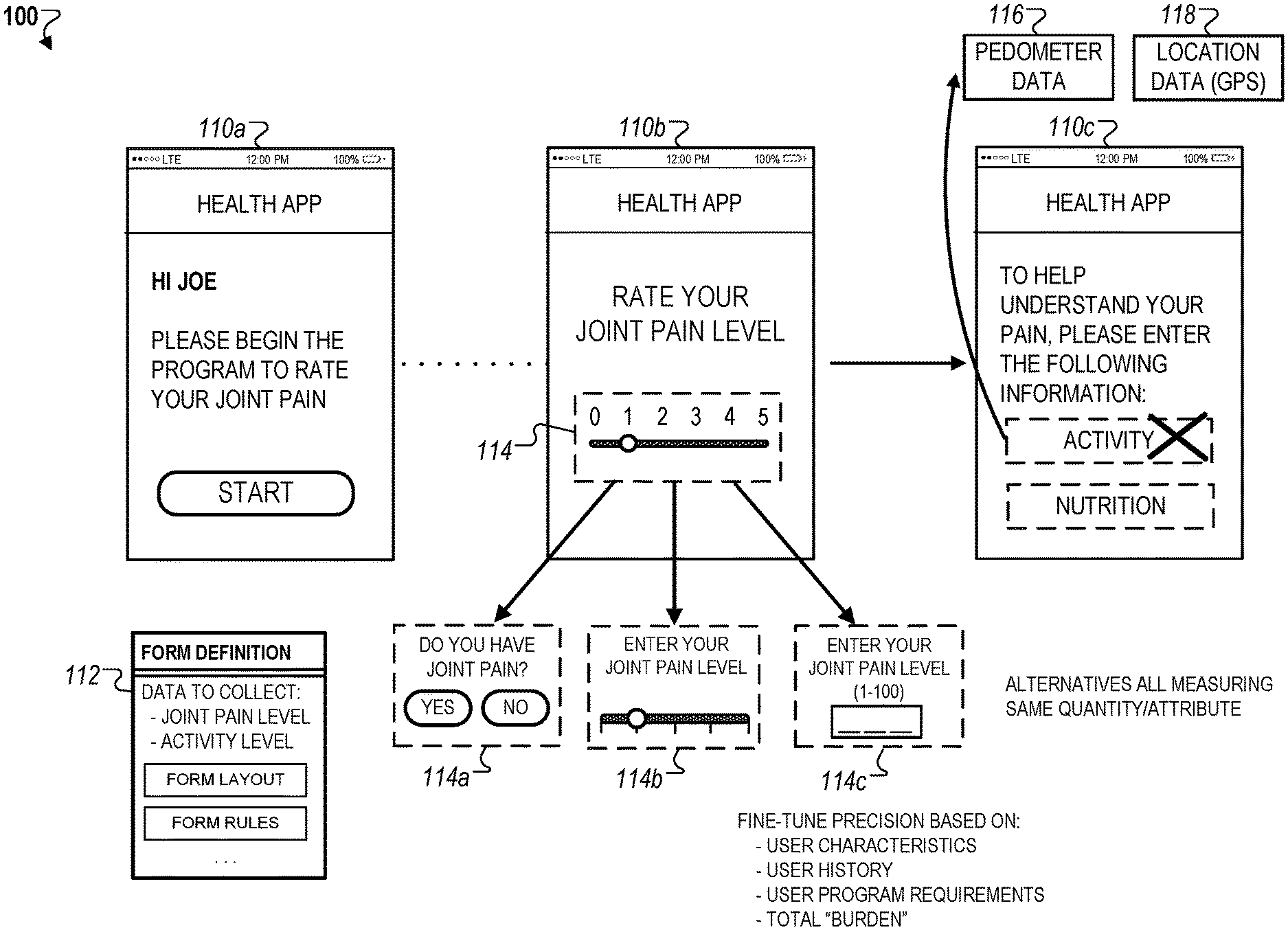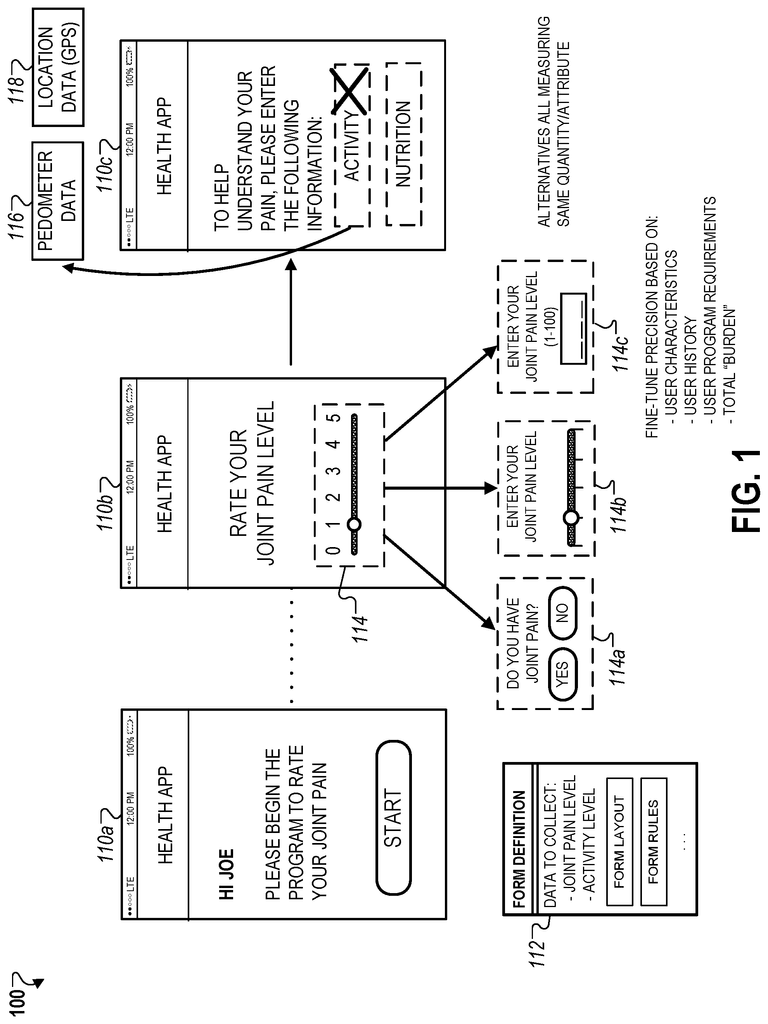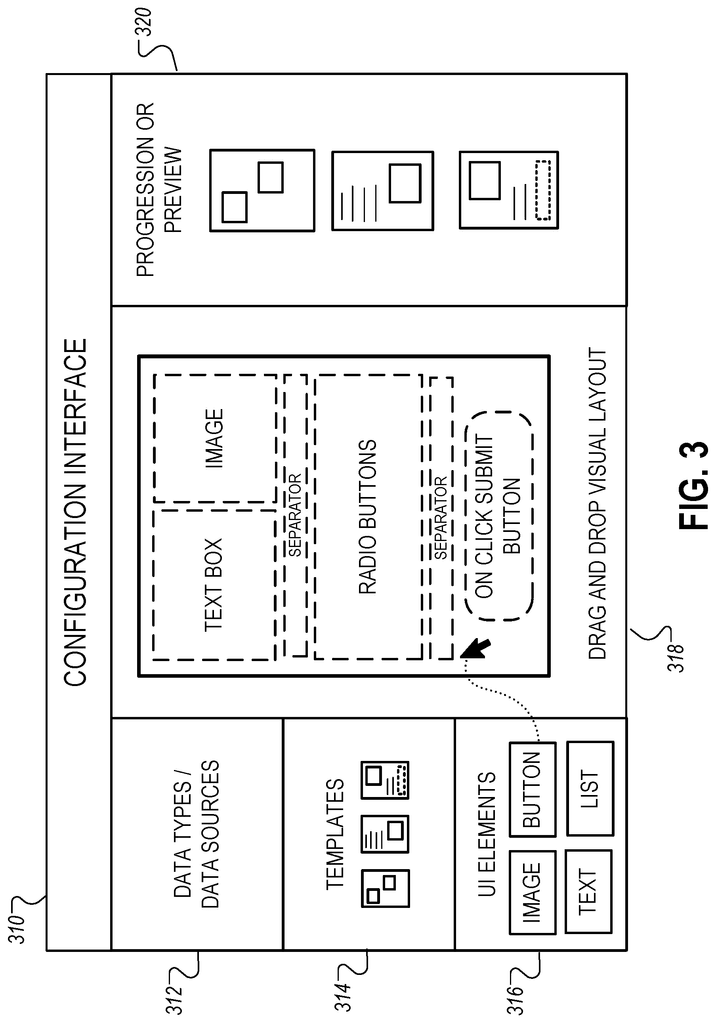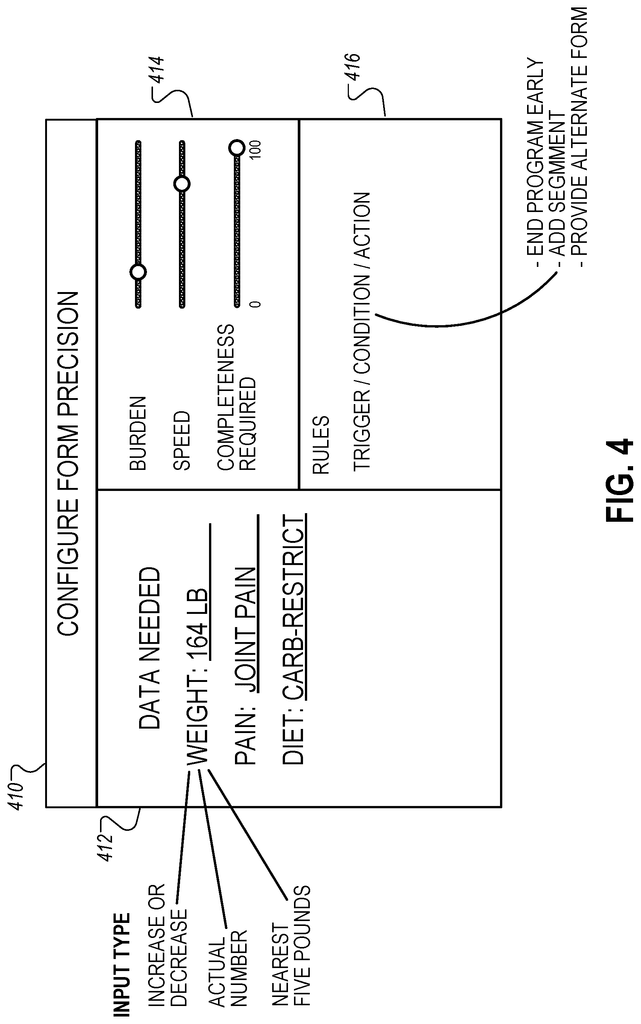Invented by Praduman Jain, Dave Klein, Neeta Jain, Yue Cao, Vignet Inc
One of the key drivers of this market growth is the increasing adoption of smartphones and wearable devices. These devices are equipped with sensors that can collect various health-related data, such as heart rate, sleep patterns, and physical activity levels. By integrating these devices with digital health monitoring surveys, researchers can gather real-time data from a large number of participants, eliminating the need for in-person visits or paper-based surveys.
The use of digital health monitoring surveys also offers several advantages over traditional methods. Firstly, it allows for more frequent data collection, enabling researchers to capture fluctuations in health status over time. This longitudinal data can provide valuable insights into disease progression, treatment effectiveness, and patient adherence to prescribed therapies.
Secondly, digital surveys can be tailored to individual participants, making the data collection process more engaging and personalized. By using interactive features, such as gamification or personalized feedback, researchers can increase participant compliance and reduce survey fatigue. This, in turn, leads to higher-quality data and more accurate results.
Furthermore, digital health monitoring surveys can reach a wider and more diverse population compared to traditional methods. With the increasing global penetration of smartphones and internet access, researchers can collect data from individuals in remote or underserved areas. This inclusivity ensures that health research is representative of different populations, leading to more equitable healthcare policies and interventions.
The market for increased effectiveness of digital health monitoring surveys is also driven by the growing demand for real-world evidence in healthcare decision-making. Policymakers and healthcare providers are increasingly relying on data from real-world settings to inform clinical guidelines, treatment protocols, and resource allocation. Digital health monitoring surveys provide a rich source of real-world data that can complement traditional clinical trials and observational studies, offering a more comprehensive understanding of health outcomes and treatment effectiveness.
However, despite the numerous benefits, there are still challenges to overcome in this market. Data privacy and security concerns remain a significant barrier to widespread adoption. Participants need to trust that their personal health information will be protected and used responsibly. Additionally, there is a need for standardized data collection protocols and interoperability between different digital health platforms to ensure seamless data integration and analysis.
In conclusion, the market for increased effectiveness of digital health monitoring surveys is poised for continued growth as technology continues to advance and the demand for real-world evidence increases. The integration of smartphones and wearable devices with digital surveys offers a more efficient and personalized approach to data collection, leading to higher-quality insights into population health trends and treatment outcomes. However, addressing data privacy concerns and establishing standardized protocols will be crucial in unlocking the full potential of this market.
The Vignet Inc invention works as follows
In some implementations, the system adjusts an application’s electronic form dynamically based on data from users and form data. The computing device receives form data that defines the characteristics of an electronic form. The form data contains one or more rules that are used to change the contents of the electronic forms for different users. The computing device then obtains user data that indicates characteristics of the user. The computing device then selects an interactive element from a list of multiple interactive components based on user data received and rules contained in the form data received. The interactive element is included in a customized view of the electronic forms. “The view of the electronic form customized for the user is displayed by the computing devices.
Background for Increased effectiveness of digital health monitoring surveys
Applications for computers, mobile phones, and other devices are able to provide users with useful functionality. User forms are typically displayed on the user interfaces of application. Users can enter data into user forms that include standard elements of graphical user interfaces such as radio buttons, checkboxes or text fields. These are then sent to the server to be processed. A text box, for example, can allow a user to enter a single line (e.g. username and password), while a radio button allows a selection of options from a list, and a button that says “submit” instructs an application to perform the specified function. User interfaces are often statically configured in order to present pre-defined entry forms for a user.
In some implementations, the system can dynamically provide customized forms through an application. The system may include an interface that allows an administrator to create forms and make remote changes to them. These changes will take place automatically and in real-time on the user’s device. Forms that are created by an administrator can be dynamically customized to each user. The same form definition may result in different interfaces being shown to different users. The same form definition may also cause different views to be displayed to the same user in different contexts. These features, as well as others that are discussed below, give administrators the ability to create multiple variations of the same form using a single definition. They can also update the form easily for many users. The customizations of the application for each user can also increase the engagement and ease with which users enter data into the form.
Conventional applications do not always allow for remote adjustments of electronic forms or customisations to individual users. These forms often fail to engage users in a meaningful and consistent way. In many cases, the electronic forms for applications are defined by predefined client-side instructions. For healthcare applications, it is often necessary to adjust electronic forms for a wide range of users in order to make them effective. Forms may be required to collect information in different ways and at different precision levels to monitor an individual’s physical and mental health across different conditions.
In certain implementations, the system can adjust electronic forms dynamically and variably to meet user needs. This will improve information collection related to various factors. Different configurations of an online form can be tailored to users who have different conditions, or different attributes. Customized electronic forms allow users to control the data collection methods, the data type, and the information provided on the electronic form. By personalizing the electronic forms on the application, the engagement between the users and the application is improved.
The server may customize electronic forms by updating the form definition which configures the form. The form definition specifies the characteristics of an electronic form, such as the display properties, interactive components to be included and/or rules which vary the content of the form for different users. The form definition may also specify the different types of data to be collected (e.g. user input on the electronic form or data from third-party APIs, data collected wirelessly by the user device or data collected using sensors on the device). The form definition may also include validation rules to specify the types of input that is valid or invalid by the user.
The architecture of the system includes an application on a device and an administrative system that allows an administrator to create and update the form definitions for electronic forms that are provided to users through the application. The administrator can customize the electronic forms by using a configuration tool that allows customization. This includes specifying the data types the form will collect and/or the layout parameters to display the form in the application. The application server will then use the administrator’s design to create a form definition, which includes the rules for generating an electronic form on the device. The generated form definition will then be transmitted to the device, so that it can generate the electronic form dynamically within the application.
The rules defined in the form definition are used to adjust dynamically the content on the electronic form. The client device can use the form definition to change individual views of an electronic document, for example, by changing interface elements. that are included in an electronic document, or by adjusting the accuracy level of information on an electronic document. Multiple electronic forms can be adjusted, for example by adjusting how they are displayed.
Adjustments can be made to electronic forms in real time without the need for application updates (e.g. without changing the executable code). The server could, for example, periodically update the form definition to allow an electronic form in the application to be adjusted without the need for a complete application update. The application can process the updated definition of the form to adjust the electronic forms while the user uses the application. The system can update electronic forms automatically in response to the data that is received by the user device.
If a user enters invalid data into an electronic form then that form can be modified to prevent the submission of any additional information. If the application receives sensor information that reflects the performance of the user (e.g. pedometer data), an electronic form asking the user for the number steps can be deactivated dynamically to reduce data duplication.
The server can also adjust the form definition in response to data received by the device over time. Form definition adjustments can, for example, include rules that specify changes to specific user behaviors and/or actions on the device and how they change over time. The server can generate an initial form, and then adjust the form based on real-time user activity. Adjustments can be made either reactively to recent changes to a user’s behavior, or pro-actively by using pattern recognition analysis to predict future changes to user behaviour.
This specification describes, in one aspect, a method that is performed by one or several computing devices. The method comprises receiving, via a computer network and by a computing device that specifies the characteristics of an electronic format, including rules that are configured to change the content of that electronic form presented for different users. Obtaining, through the computing unit, user data indicating the characteristics or activities of the user. Selecting, by a computing device that selects an interactive element out of a plurality of interactive elements, based on both the user data as well as the rules contained in the form data. Customizing a view of
One or more implementations may include optional features. In some implementations, for example, form data can be configured to cause a computing device to obtain (i), user input into the electronic form and (ii), additional data from additional data sources. The additional data may include passively-sensed or actively-sensed sensors, data gathered from a computing device sensor, data derived from a wirelessly connected device or API, etc.
In some implementations, there are one or several rules, wherein the first one specifies one, two, or three triggers to apply the rule. It also specifies one, two, or three conditions to evaluate in order to apply the rule. And it specifies at least one, if not more, of those conditions.
In some implementations, an electronic form may include multiple sections that are displayed in sequence. One or more rules can customize the content or sequence of sections depending on the user input.
In some implementations the form data define at least one valid rule that specifies the requirements for user input into a portion the electronic forms; the method includes receiving an input from a user through the electronic forms; determining the input doesn’t satisfy the one or more validation rules; and restricting the submission of data via the electronic forms based on the determination that the input does.
The form data may specify a datatype for the user input that is collected via the electronic form. In some implementations, this datatype is specified in the form data. A method includes selecting an interactive element by the computing device to receive the user input specified by the datatype, and choosing the interactive element from multiple interactive elements which each receive the input specified by the datatype.
In some implementations, the user can choose the interactive element among several different interactive elements which each receive input from the user of the specified type of data at different levels of precision.
The updated form indicates a change in the electronic data. This updated data can be received over a network and displayed through the application.
In some implementations, customizing a view of an electronic form involves: determining the level required by a user for data entry into the electronic form, determining whether the level exceeds a threshold of difficulty and, in response to determining the level exceeds the threshold of difficulty, adjusting content in the customized form view to reduce the difficulty level below the threshold of difficulty.
The customizing of an electronic form may include: determining from form data that a certain data type is to be collected; obtaining from the computing devices the data for the specific type based, at least in part, on sensor data provided by the computing devices; and customizing the electronic form view so as to remove a section asking the user for data of this particular type.
This specification describes another method that is performed by a computer. The method includes providing, through one or multiple computers, a design interface for an electronic form that collects data about the user. Receiving, via the one-or-more computers, user input indicating data types to be collected using the electronic forms and one of more layout parameters; generating form data by one or several computers specifying one or two rules for customizing electronic forms; and providing the form information to a computing device.
Click here to view the patent on Google Patents.









